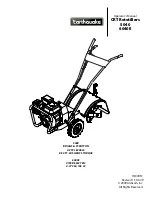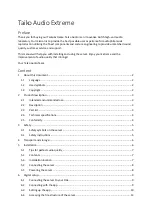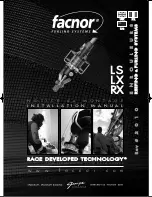
8.0 Sweep Monitoring
Sweep is used to identify improper balance of amplifiers, tilts, or suck outs. DOCSIS 3.1/4.0 deployments utilize previously unused and
untested frequency spectrum exposing potential trouble for operators. Initial Downstream expansions go to 1.2 GHz, evolving later to
1.8 GHz, while the Return Path will extend to 85 MHz or 204 MHz depending on market or MSO service delivery objectives.
Tilt and Suck Out
Starting from a drop point nearest to the signal source, for example, a Headend office, a Sweep measures the signal levels across the
bandwidth with predefined check points in a Sweep table. The measurement is kept as a reference. Move the test set to the next drop
point away from the first one, take the same measurement and compare with the reference measurement. Ideally, the signal of each
check point should be relatively less or more, proportionate to the reference signal.
Forward Path Sweep
Forward Path Sweeps verify the frequency response and proper operation of amplifiers to ensure proper tilt and balancing. The
CX380C is fully compatible with the CaLan 3010H+ Headend Sweep Transmitter, which injects active sweep points, enabling a forward
path sweep up to 1.8 GHz. Even with an all-digital HFC system, tone insertion between QAM channels is made possible by the CaLan
3010H+'s ability to transmit lower level sweep tones that do not impair live QAM channels.
In Service Sweep
This is a non-service interrupting forward path sweep feature. In Service Sweep measures existing channels based on the user
configured Channel Table. The sweep trace is displayed by plotting a line between points. The points are based on channel
measurements, in place of sweep measurements. The start and stop points are the lowest and highest channels.
In the Analog spectrum, sweep can be performed by inserting tones within the analog TV channels or unused bands - a sweep tone
generator is then required at the Headend. In an all-digital HFC system, tone insertion between channels is not possible, therefore In
Service Sweep (ISS) is the preferred solution. ISS measures existing channels and makes a comparison. See the diagram below.
Forward Path Sweep Insertion Points
CX380C User Manual RevA00
Page 52 of 105
Содержание CX380C
Страница 18: ...Channel Table Selection Main Menu Channel Table List CX380C User Manual RevA00 Page 18 of 105...
Страница 50: ...OFDM Subcarrier Scan MER OFDM Subcarrier Scan Noise Floor CX380C User Manual RevA00 Page 50 of 105...
Страница 51: ...OFDM Subcarrier Scan MER Noise Go back to top Go back to TOC CX380C User Manual RevA00 Page 51 of 105...
Страница 88: ...WiFi Wiz Connect IP Go back to top Go back to TOC CX380C User Manual RevA00 Page 88 of 105...
















































